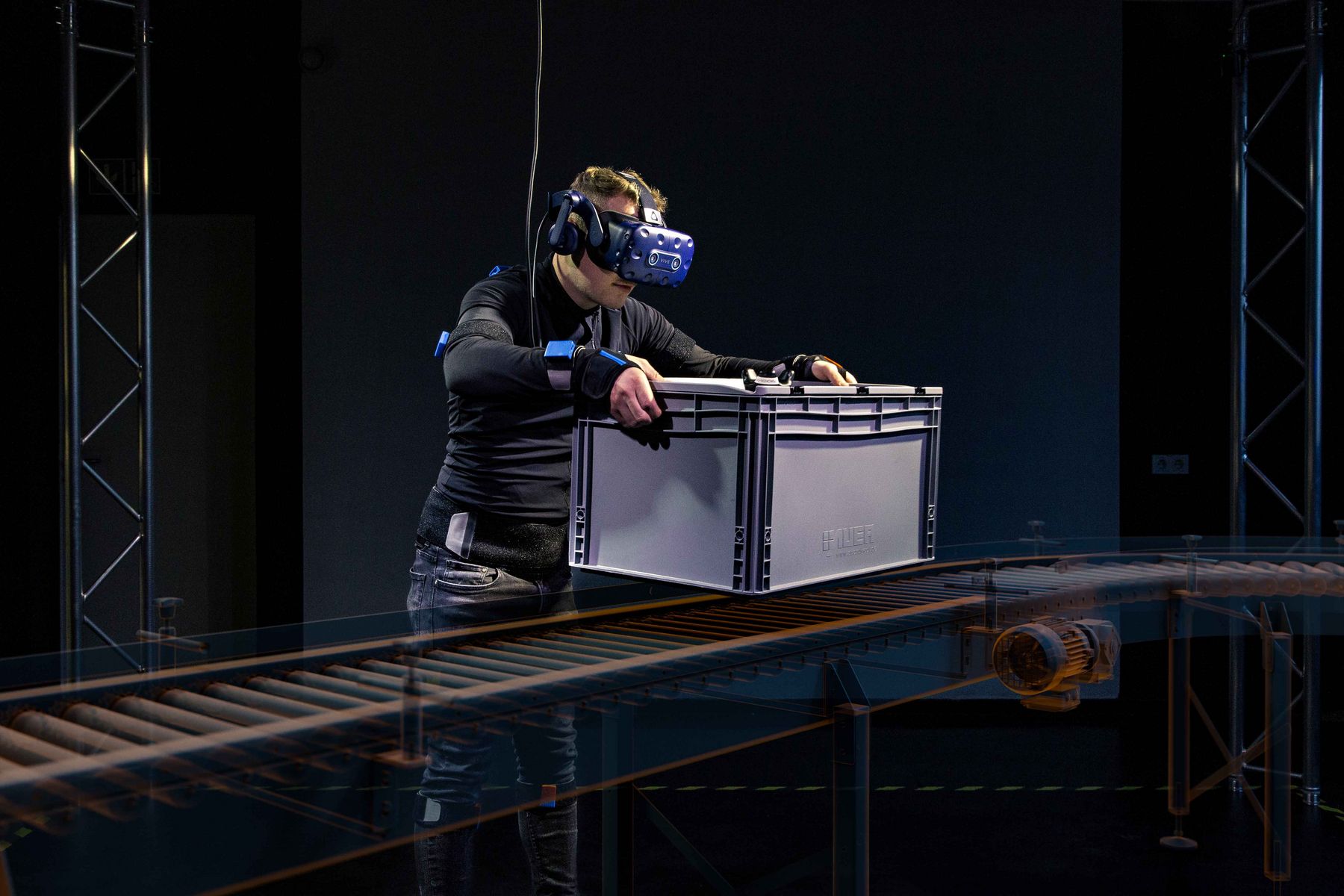Test first, then produce
![[Translate to Englisch:] Student im Virtual-Reality-Brille im Labor mit einem Roboter-Greifarm](/fileadmin/_processed_/9/5/csm_21_06_29_Human_Factors_Lab_Roboterarm_f24bb1d917.jpg)
Test first, then produce
How do products, everyday environments and workplaces really work for the people who use them? The new Human Factors Lab at the Faculty of Design at Darmstadt University of Applied Sciences (h_da) researches at the development stage whether they are sufficiently user-friendly and ergonomic. In the future, industrial design students will work with industry partners in the lab to test the human use of innovative technologies in order to improve the design process.
By Simon Colin, 29 June 2021
New products or applications fail if people do not accept them. Particularly in the case of digital and technical products, this is often because they are not intuitive enough or are difficult to use. In the new Human Factors Lab, Prof. Philipp Thesen and Prof. Tino Melzer and their team analyze how human factors affect use, especially physiological and cognitive abilities, even before the prototype stage. This design analysis in the product development process, which aims to improve usability, can help to avoid expensive development deadends.
Numerous test and simulation devices are available for this purpose in the Human Factors Lab. Virtual and data-supported ergonomics and motion analyses are used to determine human posture and collect motion data that provide clues for the ergonomic optimization of products, but also of workplaces in industry, the skilled trades, the healthcare and nursing sectors, or in public institutions. In addition to virtual reality tools, motion tracking suits are also used, which are equipped with sensors and record motion sequences.
"The positive impact of purposefully designed workplaces and living spaces for tomorrow is realized by the acceptance of the people who use them," says Tino Melzer, professor of design and ergonomics. "One of the central topics of Human Factors is ergonomic workplace design. It helps reduce the physical and mental workload and increases employee satisfaction and performance." For example, the Human Factors Lab could be used to simulate and study the placement of pilots in cockpits or the positioning of controls in virtual environments. The results can then be incorporated into the design process.
"In the digital age, the task of designers is to humanize technology," says Philipp Thesen, Professor of Human-System Interaction. "In this context, human-centered design of the human/machine interface has a high priority. Human Factor analysis help to put people at the center of the development of technical products to ensure the intuitive and efficient handling of products, systems and workplaces."
In the future, companies from industry and SMEs will be able to use the h_da's Human Factors Lab for joint research projects in order to incorporate the knowledge gained about human factors when developing products or applications. "This means that Darmstadt University of Applied Sciences offers an application-oriented research lab that is currently quite unique in the German university landscape," says Prof. Dr. Nicole Saenger, Vice President for Research and Sustainability. "Our students also benefit from the projects, learning how important the early inclusion of design is for the development of products as well as everyday environments and workplaces."
Link to the lab: design.h-da.de/human-factors-lab
Portrait of the topic on Hessenschau TV documentary (in German): www.hessenschau.de/tv-sendung/-neuer-fachbereich-fuer-produkte-an-hochschule,video-154236.html
Contact details
Simon Colin
Press department
Phone: +49.6151.16-38036
E-Mail: simon.colin@h-da.de

